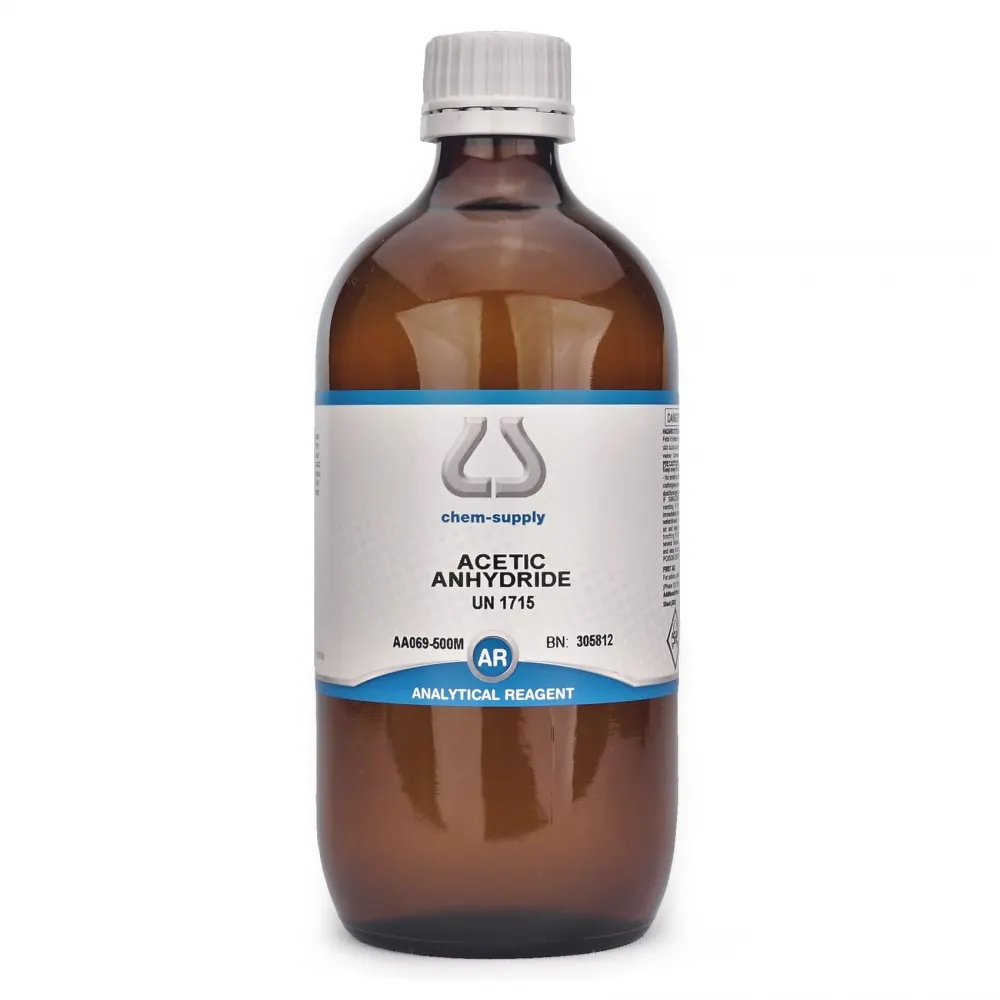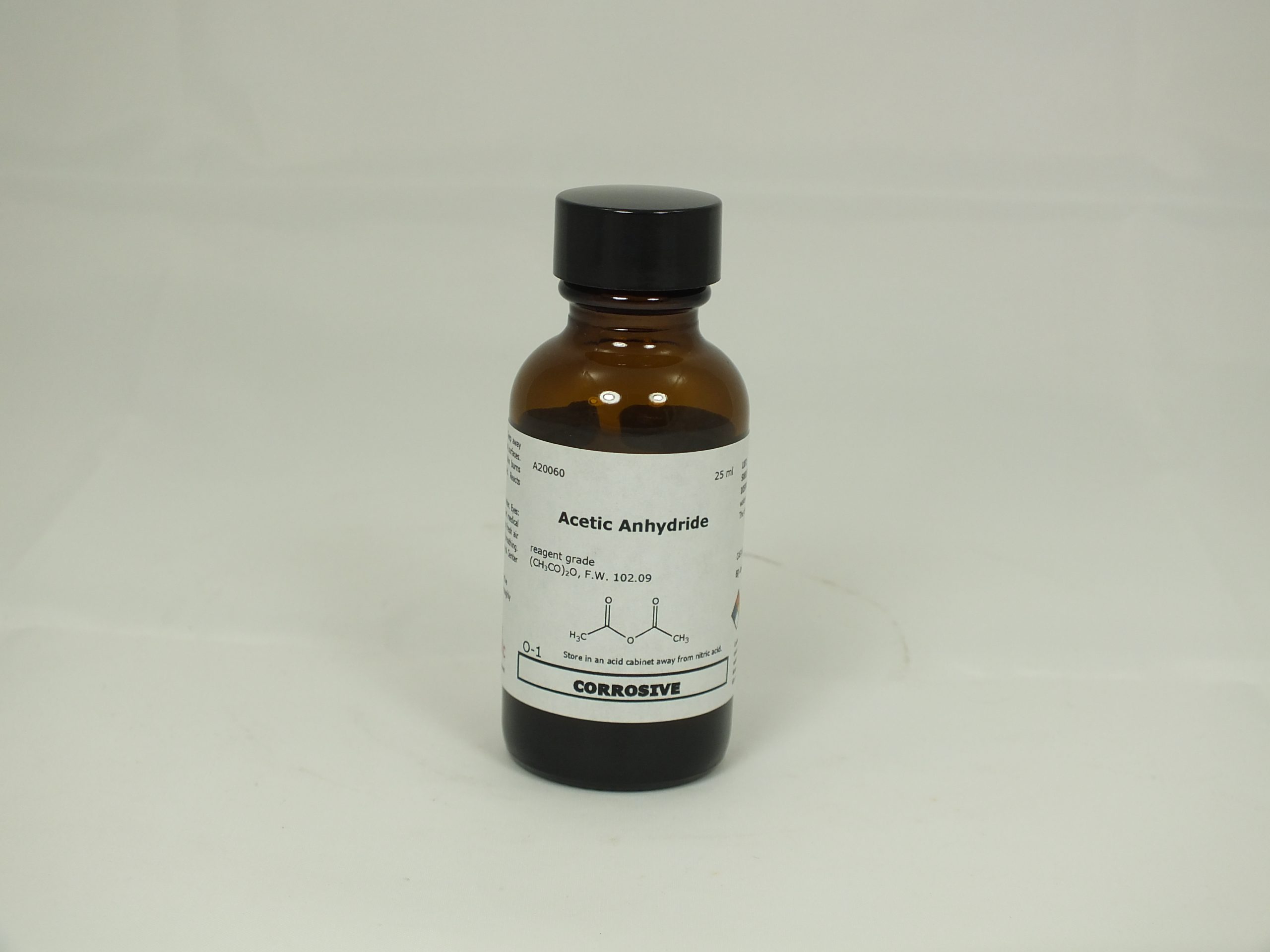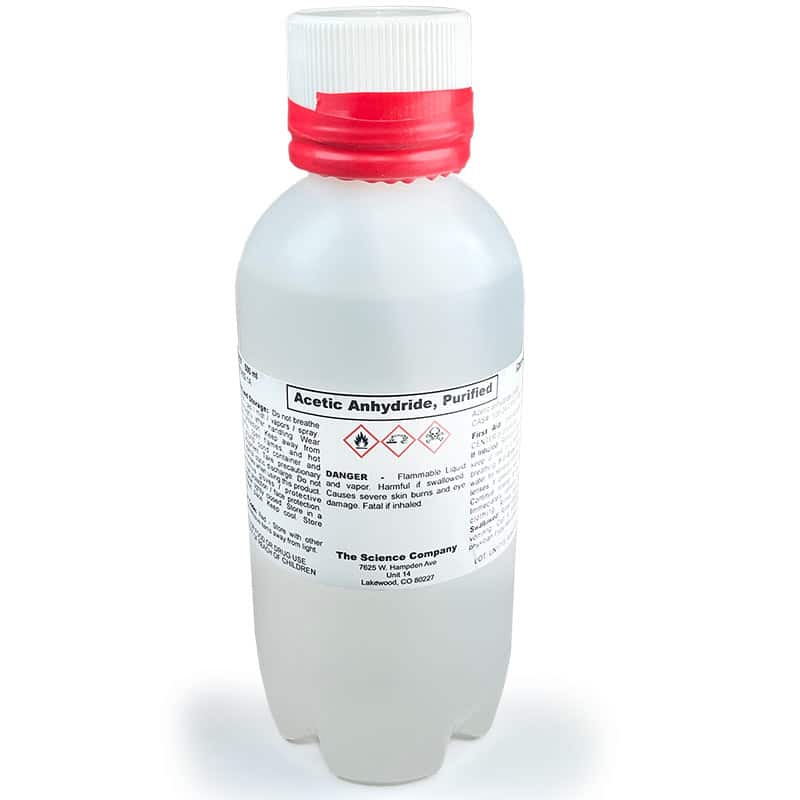Description
Acetic Anhydride: A Powerful Reagent with Diverse Applications
Acetic anhydride, with the chemical formula (CH₃CO)₂O, is a colorless liquid with a pungent, vinegar-like odor. Often abbreviated as Ac₂O, it’s a vital reagent in organic synthesis, playing a crucial role in the production of pharmaceuticals, plastics, dyes, and various other industrial chemicals. However, its reactive nature and potential hazards necessitate careful handling and storage.
Key Characteristics and Properties:
Acetic anhydride is characterized by its:
- High reactivity: Due to the presence of two acetyl groups linked by an oxygen atom, it readily undergoes acylation reactions.
- Strong electrophilic nature: The carbonyl carbon atoms are susceptible to nucleophilic attack.
- Hydrolysis: It reacts with water to form acetic acid, which contributes to its characteristic odor.
- Solvent properties: It is miscible with many organic solvents like ether, chloroform, and benzene.
Primary Uses in Organic Synthesis:
The most prominent application of acetic anhydride lies in its use as an acetylating agent. This means it introduces an acetyl group (CH₃CO-) into a molecule. Here are some key examples:
- Acetylation of Alcohols and Amines: Acetic anhydride reacts with alcohols to form esters and with amines to form amides. These reactions are widely used to protect functional groups during complex syntheses or to modify the properties of a molecule.
- Production of Aspirin (Acetylsalicylic Acid): One of the most well-known uses is in the synthesis of aspirin. Acetic anhydride reacts with salicylic acid, acetylating the hydroxyl group to form acetylsalicylic acid and acetic acid as a byproduct.
- Cellulose Acetate Production: Acetic anhydride is crucial in the production of cellulose acetate, a versatile polymer used in fibers for textiles, photographic film, and plastics.
- Synthesis of Dyes and Pigments: It is used in the production of various dyes and pigments, contributing to the vibrant colors we see in many products.
- Other Industrial Applications: Acetic anhydride also finds application in the production of explosives, perfumes, flavors, and as a dehydrating agent in certain chemical processes.
Safety Considerations and Handling:
Despite its versatility, acetic anhydride poses significant safety risks. It is:
- Corrosive: It can cause severe burns upon contact with skin, eyes, and mucous membranes.
- Lachrymatory: Exposure to vapors can irritate the eyes and respiratory system, causing tearing and coughing.
- Flammable: It is a flammable liquid and should be kept away from heat, sparks, and open flames.
- Harmful if swallowed: Ingestion can cause serious health problems.
Proper handling procedures are essential when working with acetic anhydride. These include:
- Using appropriate personal protective equipment (PPE): This includes gloves, safety goggles, and a lab coat. A respirator may be necessary in situations where exposure to vapors is likely.
- Working in a well-ventilated area: This helps to minimize the concentration of vapors in the air.
- Storing acetic anhydride in a cool, dry, and properly labeled container: The container should be tightly sealed and stored away from incompatible materials, such as water and strong bases.
- Following established safety protocols and procedures: Familiarize yourself with the specific safety guidelines for working with acetic anhydride in your laboratory or workplace.
Conclusion:
Acetic anhydride is a powerful and versatile reagent with a wide range of applications in organic synthesis and industry. Its ability to introduce acetyl groups makes it invaluable in the production of pharmaceuticals, plastics, dyes, and other essential materials. However, its reactive and hazardous nature necessitates careful handling, storage, and adherence to strict safety protocols to ensure the well-being of those who work with it. By understanding its properties, uses, and associated risks, we can harness its potential safely and effectively.













Reviews
There are no reviews yet.